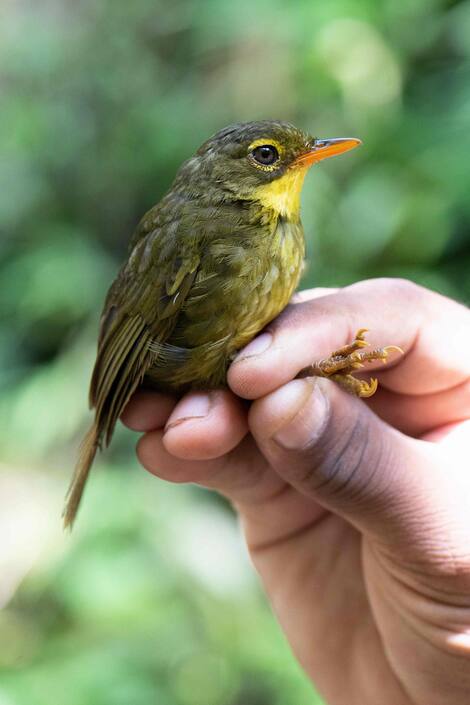
After a 24-year game of hide-and-seek, the dark tetraga, a small passerine species found only in Madagascar, has grown its beak again, much to the relief of the scientific community.
A yellow-throated bird was spotted twice during an ornithological mission in December in the remote forests of northeastern Madagascar.
After a 40-hour drive and a half-day walk, the team reached the spot where the rare species was spotted last year in 1999.
There, despite their protected status, they found forests in poor condition, mostly converted to vanilla plantations. But several days later, the bird was caught on camera hopping through the undergrowth near a rocky river.

AFP
“If the dusky tetraca prefers areas near rivers, that may explain why it has eluded us for so long,” said John Mittermeier, director of the American Bird Conservancy’s Endangered Birds Program and a member of the committee.
In fact, “watching birds in rainforests means listening to bird calls, so there’s a natural tendency to avoid spending time near noisy rivers,” he explained.
A second group found another dusky tetraga spending most of its time in dense vegetation near the river, searching for insects and other prey.
“Now that we’ve found the elusive tetraca and have a better understanding of its habitat, we can look for it in other parts of Madagascar,” said Lille-Arison René de Rolland, director of the Peregrine Fund’s Madagascar program.
The dusky tetraca (Crossleyia tenebrosa) is one of the ten most sought-after endangered bird species, a list managed jointly by travel partners Re:wild, the American Bird Conservancy and BirdLife International.
More than half of Madagascar’s birds, or about 115 species, are endemic, meaning they are found nowhere else.
More than 40 bird species on the island are listed as endangered by the International Union for Conservation of Nature (IUCN) Red List.
Dark tetraca is not classified due to lack of data.
The main drivers of biodiversity loss in Madagascar are deforestation to make way for agriculture, habitat degradation, invasive species, climate change and poaching.
According to previous research, 40% of the island’s original forest was cleared between the 1950s and 200s.




More Stories
More than 200 former Republican aides back Kamala Harris | US Election 2024
An investigation into the ill-treatment of the Lev Tahor sect in Guatemala
Brossard is suspected by the US of supporting Russia’s war effort